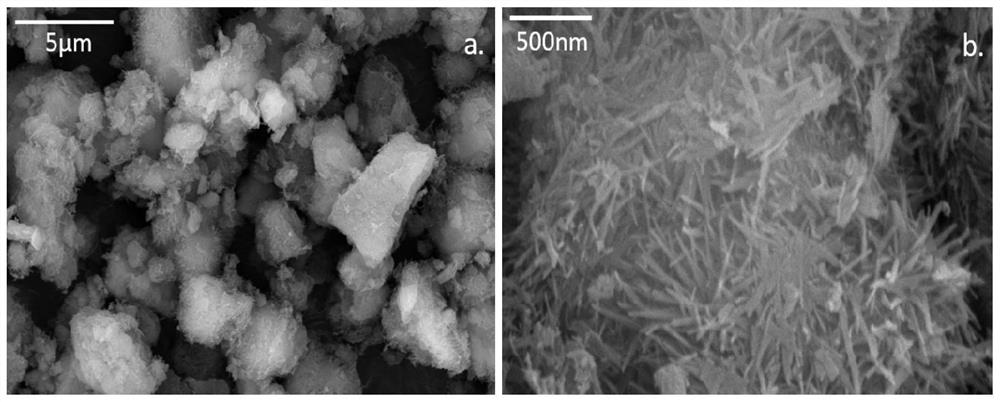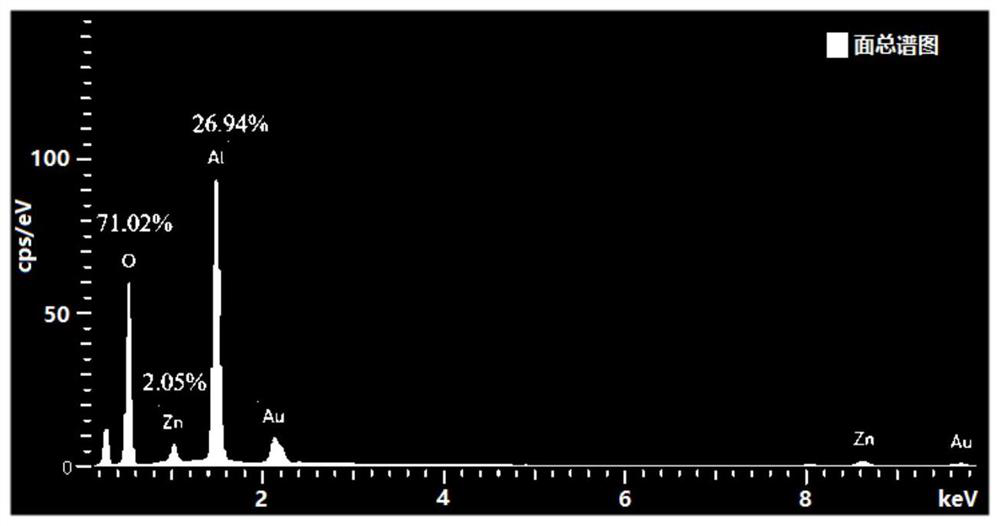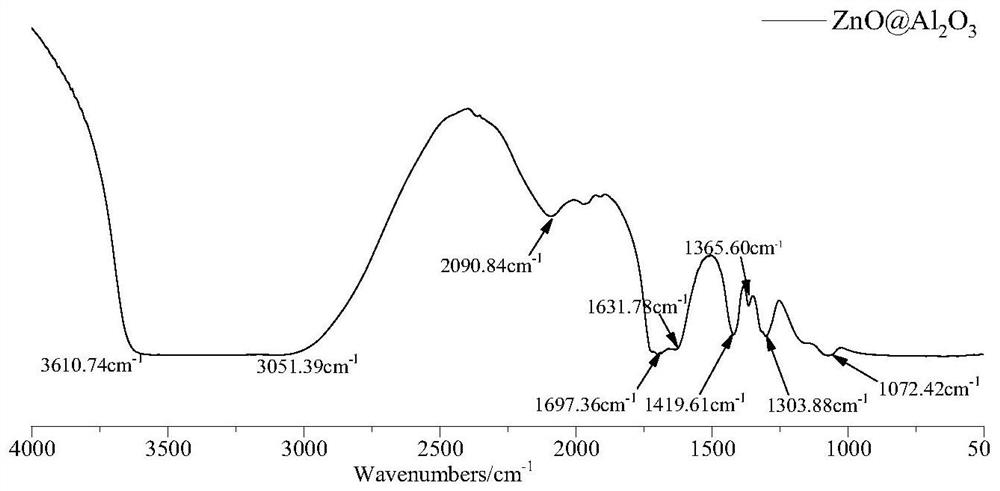Supported nano zinc oxide as well as preparation and application thereof
A nano-zinc oxide, loaded technology, applied in the field of environmental pollution control, can solve the problems such as the rebound of antibiotic-resistant bacteria, achieve the effect of inhibiting photoremediation, simple preparation process, and convenient recycling
- Summary
- Abstract
- Description
- Claims
- Application Information
AI Technical Summary
Problems solved by technology
Method used
Image
Examples
Embodiment 1
[0036] Example 1 ZnO@Al 2 o 3 Preparation and Characterization of Particles
[0037] Concrete preparation steps are:
[0038] S1. Prepare the template: 16g epoxy resin, 18g polyethylene glycol 1000 and 14g polyethylene glycol 2000 are vigorously stirred under heating conditions, and after they are all melted, 4g diethylenetriamine is quickly added, and quickly poured into polytetrafluoroethylene Curing reaction at 70°C for 3 hours in an ethylene square mold to generate an organic solid template with large pores, and drying at room temperature for 24 hours. Cut the template into about 1 cm × 1 cm × 1 cm block particles for Al 2 o 3 preparation.
[0039] S2. Preparation of Al by template method 2 o 3 Particles: 5.625g Al(NO 3 ) 3 After dissolving in 100 mL of deionized water, slowly add dropwise to 100 mL of 0.5 wt% chitosan in acetic acid solution, and add 5 g of the template particles obtained in S1. After the mixture was stirred for 1 h, aqueous ammonia was added dr...
Embodiment 2
[0052] Example 2 ZnO@Al 2 o 3 granular for sterilization
[0053] Experimental strain: Escherichia coli (RP4-E.coli) carrying RP4 plasmid was used as the sterilization object. Three ARGs including tetA, aphA and blaTEM-1 were encoded on the RP4 plasmid, which made E. coli resistant to 10mg / L tetracycline, 50mg / L kanamycin sulfate and 100mg / L ampicillin, respectively.
[0054] Take 0.1 mL of glycerol bacteria liquid thawed from -80°C refrigeration, inoculate it into 100 mL of selective LB liquid medium containing three kinds of antibiotics, and incubate at 37°C with shaking at 200 rpm. The nutritive substances in the LB liquid medium are 10g / LNaCl, 10g / L tryptone and 5g / L yeast extract; the selectivity of the LB liquid medium is aimed at 10mg / L tetracycline, 50mg / L kanamycin sulfate and 100mg / L ampicillin. The stable growth period was reached after 12 hours of cultivation, and the number of bacteria did not change basically. Therefore, the bacterial liquid after 12 hours of...
Embodiment 3
[0063] Embodiment 3UV-ZnO@Al 2 o 3 Inhibition of visible light reactivation repair of antibiotic-resistant bacteria
[0064] The experimental device is the same as in Example 2.
[0065] The non-viable bacteria system after UV irradiation, including UV irradiation alone and UV-ZnO@Al 2 o 3 The system is placed in the experimental device, and the whole device is also placed in a constant temperature incubator at 25° C., and the visible light irradiation (VL) button is turned on. After 0, 5, 10, 20, 40, 60, 120, 180, and 240 min of VL irradiation, take 0.1 mL of bacterial solution, dilute it with PBS buffer 10 times, and inoculate it on selective LB solid medium overnight. Incubate and count (CFU / mL). The selectivity of the LB solid medium is: 10mg / L tetracycline, 50mg / L kanamycin sulfate and 100mg / L ampicillin.
[0066] In this example, photoremediation experiments were carried out on bacterial liquids of different sterilization systems, in order to compare and obtain a s...
PUM
| Property | Measurement | Unit |
|---|---|---|
| Size | aaaaa | aaaaa |
| Specific surface area | aaaaa | aaaaa |
| Average pore size | aaaaa | aaaaa |
Abstract
Description
Claims
Application Information
 Login to View More
Login to View More - R&D
- Intellectual Property
- Life Sciences
- Materials
- Tech Scout
- Unparalleled Data Quality
- Higher Quality Content
- 60% Fewer Hallucinations
Browse by: Latest US Patents, China's latest patents, Technical Efficacy Thesaurus, Application Domain, Technology Topic, Popular Technical Reports.
© 2025 PatSnap. All rights reserved.Legal|Privacy policy|Modern Slavery Act Transparency Statement|Sitemap|About US| Contact US: help@patsnap.com



